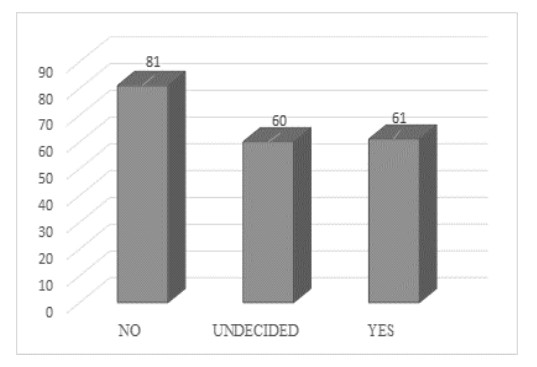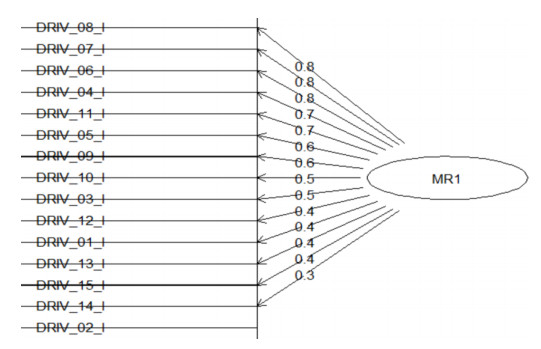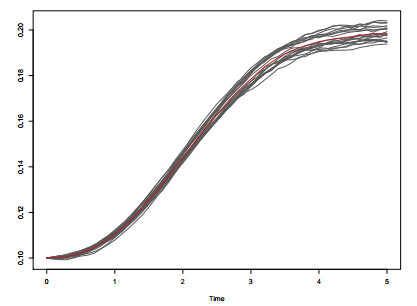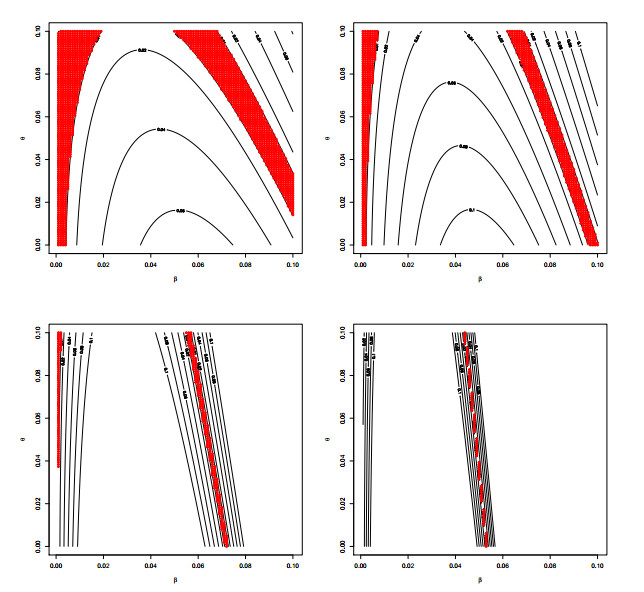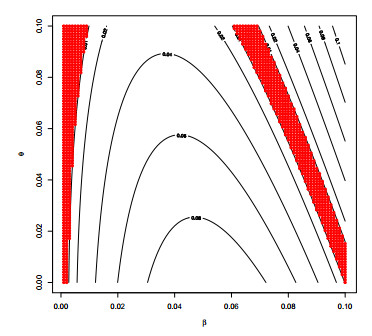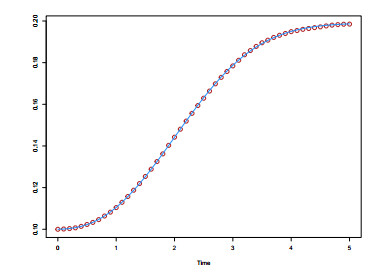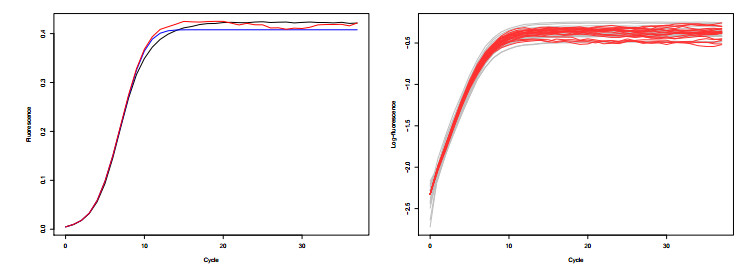The modeling of growth phenomena has become a matter of great interest in many different fields of application and research. New stochastic models have been developed, and others have been updated to this end. The present paper introduces a diffusion process whose main characteristic is that its mean function belongs to a wide family of curves derived from the classic Weibull curve. The main characteristics of the process are described and, as a particular case, a diffusion process is considered whose mean function is the hyperbolastic curve of type Ⅲ, which has proven useful in the study of cell growth phenomena. By studying its estimation we are able to describe the behavior of such growth patterns. This work considers the problem of the maximum likelihood estimation of the parameters of the process, including strategies to obtain initial solutions for the system of equations that must be solved. Some examples are provided based on simulated sample paths and real data to illustrate the development carried out.
1.
Introduction
Organic agriculture is considered the most sustainable alternative to industrial agriculture due to the many positive externalities associated with implementing innovative production processes [1]. This particular production farming system [2] includes, for example: restoration and protection of biodiversity [3,4,5,6]; maintenance of soil fertility [7,8,9] and higher water holding capacity [10]; reduction of greenhouse gas emissions [11,12,13]; human health protection [1,14]. The positive effects of organic farming on the environment, especially concerning the level of agroecosystem services provided by functional biodiversity [15], are amplified by a greater territorial concentration of production activities, which makes particularly significant actions aimed at the dissemination of this production model in a given area [16,17].
On the other hand, the quality of organic food is particularly appreciated by postmodern consumers, who are demonstrating growing attention to the healthy dimension of food [18,19], whose demand has steadily increased in recent years, especially (but not only) in the most developed countries, rising from 15.1 billion in 2000 to 96.7 in 2018, with annual growth rates that show no sign of slowing down [20].
The success of this type of agriculture also depends on the support received at a regulatory and political level. In Europe, for example, since the 1990s, organic farming has been supported by the Common Agricultural Policy [21] and, subsequently, by the Rural Development Regulations approved over the years. More recently, in the framework of the European Green Deal, the Farm to Fork strategy [22], among the various actions to achieve the goal of a resilient and sustainable food system in an environmental, social and economic sense, sets the goal of at least 25% of the agricultural area of the EU invested in organic farming to be reached by 2030. This recognition of the potential of these models [23] is important, but it requires the identification of factors that can facilitate the transition from industrial to organic farming.
Several studies [24,25,26,27,28] highlight that the adoption of this innovation is conditioned by multiple, sometimes interconnected, elements, including the personal characteristics of the farmer and his family (the psycho-behavioural, psychosocial factors and ethical reasons), the level of skills of the entrepreneur and the supportive factors (for example, training, information acquisition or membership of association) essential for reorganising productive and commercial activities, and the farming factors and perception of the economic and political/regulatory environment.
Our study will contribute to this strand of the literature, assessing the impact of decisive factors on organic farmers' intentions to convert to organic farming in the Marche region and, more specifically, in the province of Pesaro-Urbino.
The Marche region represents an interesting case because it is a 'zipper region', with a central position between Northern and Southern Italy, both in geographical terms and in terms of general economic and social conditions [29]. At the same time, it is one of the Italian regions with the greatest share of agricultural surface destined for organic farming (22.2%, in 2019). The Pesaro-Urbino province, where about 25% of farms with certified organic crops and livestock of the regional total are located (https://siar.regione.marche.it/web/public/ConsultazioneAlboBio.aspx), is characterised by the presence of pioneer farms and some supply chain in organic production. This territory is therefore configured as an area particularly suitable for the creation of programs aimed at strengthening organic agriculture, such as organic districts [30] or Area Agri-environmental Agreements1 [31].
1 These Agreements, financed by PSR of Marche region, have the purpose of aggregating and coordinating a set of public and private subjects of a particular territory, in order to face a specific environmental problem, for example water protection, through the undertaking of specific commitments especially by organic farmers.
To support this process, we aim to investigate the factors that may encourage (or discourage) farmers' choice of the organic farming system. The study was developed through a participatory approach, organising focus groups with experts, policymakers, and local stakeholders, to collect data and discuss the results obtained.
Through a farmers' survey and the econometric analysis of survey data, we analysed the relationships between the farmer's choice to adopt or not to adopt organic farming and a set of personal, professional and contextual factors.
The paper is structured as follows. Section 1 presents the main conceptual arguments proposed in the literature to explain the conversion process to organic farming. Section 2 illustrates the quantitative investigation adopted, particularly the choice and definition of the statistical analysis model and data collection. The results of the estimation procedures are reported and discussed in Section 3, whereas Section 4 presents some implications of the analysis carried out for stakeholders and policy makers and, at the same time, provides some directions for further research.
2.
Conversion to organic farming: Drivers and obstacles
Since the early 1990s, the organic sector has steadily grown worldwide, both in surface area and the number of producers, from 11 million hectares certified as organic in 1999 to 71.5 million hectares in 2018, and reached almost 2.8 million producers [20,32]. Europe, in particular, is one of the continents with the largest share of agricultural land devoted to organic (8.5%, in 2019, with a growth rate of 38% over the last 10 years) [33]. The positive supply trend is certainly driven by the growth in demand and exports, especially to developed countries [34], where there is a strong increase in organic food consumers [35]. In fact, in recent years, the increasing attention towards the issue of environmental protection and food safety [26,36] has led to greater demands for organic foods, which are considered healthier, tastier, and obtained through more sustainable production processes than conventional foods [18,37,38].
In addition to excellent market prospects, several other factors may influence the choice of agricultural entrepreneurs to convert to the organic method, as highlighted by a vast body of literature.
In general, in the initial phase of the development of this sector, entrepreneurs were driven by ethical motivations rather than economic reasons [32]: organic farming, in fact, was considered a valid alternative to intensive production systems, able to ensure the preservation of the quality of natural resources and the ecosystem [26].
Over the years, several studies have reported the importance of other variables in the choice of production method, starting from personal characteristics. These include, for example, gender, age, and educational qualifications. In some articles, the farmers most likely to convert to organic would be mainly women [39], younger age individuals [28,40,41,42] and with a medium-high education level [25,26,35,43]; in other studies, however, older and more experienced farmers have been found to have a more favourable attitude towards this production system [44,45,46,47].
Organic certification adoption can be driven by farmers' values and lifestyle, especially in terms of environmental attention or awareness about the impact of production activities on natural resources [32,39,48,49,50,51,52] and human health [14,25,26,27].
In addition to social motivations, farm characteristics are also relevant for switching to this production method [25], although different studies show quite differentiated results. In fact, some analyses emphasise that large companies are less likely to convert, as they usually use more intensive production methods than small to medium-sized companies [53,54,55]. Other research shows, however, that large firms are more likely to make this shift because they have greater financial resources and have the ability to overcome one of the biggest barriers to business transformation, namely access to technical assistance, contracting, and production planning services [46,56,57].
Shifting to more sustainable models would involve radical changes [27], which are not particularly smooth for individuals, such as farmers, who are risk averse [35,51,57,58,59].
Among the most important motivations to convert to organic farming, economic ones should certainly be considered, especially the provision of public incentives to adopt this production model [25,26,32,39,51,56]. In the European Union, for example, the development in the 1990s was supported by the definition of the regulatory framework on organic farming (starting with Regulation (EC) 2092/1991) and the introduction of incentives for low environmental impact techniques, initially with Regulation (EC) 2078/1992 and, later, with the introduction of agri-environmental payments [60].
Subsequently, with the reform of the Common Agricultural Policy 2014–2020, new rules for agricultural entrepreneurs were defined, such as the maintenance of ecological focus areas and sustainability as fundamental requirements to meet consumer expectations and create a competitive advantage [51].
Moreover, after switching from conventional to organic farming, farmers report higher productivity and earnings, given the higher price level [26,28,32,61].
The problems that hinder this process must also be considered, together with the motivations that may favour a farmer's conversion to organic. These include problems related to the availability of inputs, the difficulties of switching from conventional to organic, including those related to the bureaucratic aspects and the management of the certification system [32,35,46,49], and the lack of competent technical support [62].
An additional constraint on conversion to organic is uncertainty about the market and commercial outlets [25,32,35,46]. However, the greatest concern appears to be related to the fear of achieving lower production yields [25,35,39,48,51] and the presence of a higher workload than that required by industrial agriculture, resulting in higher production costs [25,26,35,46]. Moreover, another aspect that can hinder the conversion to organic farming is the absence of local origin labels, which is also related to ethnocentrism [63].
In addition to the obstacles related to higher production costs, problems related to the insufficiency of public measures to support this production system are also highlighted, in terms of contributions, advertising and food education to consumers [52,64], but especially the need for greater support for the acquisition of new knowledge and technologies [25].
3.
Material and methods
This study's main variable of interest is the respondent's "Intention to adopt organic agriculture" on the farm. This variable is measured using a single-item scale, which results in an ordinal variable with three levels: N—I have no intention, U—I am uncertain, Y—I will adopt organic agriculture.
The frequency of responses will allow us to evaluate the share of conventional farmers interested or considering the possibility of starting the conversion process to become organic farmers.
Through the literature analysis, the framework of the multiple factors that can facilitate or hinder the transition from conventional to organic agriculture has been defined. These factors are essentially related to drivers, obstacles, farm characteristics, and personal characteristics of the farmers.
The different types of drivers can be broken down into economic, socio-cultural, and environmental, while the obstacles can be divided into economic-organisational, and socio-cultural.
In addition to these, we consider the characteristics of the company and the level of satisfaction with the farm management results obtained. Finally, the personal characteristics of the farmer, such as gender, age, educational qualification, role on the farm, time spent on the farm, the municipality in which the farm is located.
In order to confirm or reject the relevance of these factors in orienting the behavior of entrepreneurs in the territory under consideration, we carried out a multivariate regression analysis. Given the nature of the dependent variable, the ordered logit regression approach was adopted [65]. This approach allows modeling the probability of an ordinal set of outcomes Pr(Zi) based on the values of the predictors X, as in the equation (1).
This analysis makes it possible to relate, with a normal distribution of errors, the polychotomous ordinal dependent variable, which in the specific case is represented by the possible choices of the entrepreneur with respect to conversion to organic farming (No, Undecided, Yes) to the various independent variables: ⅰ) drivers (Driv); ⅱ) obstacles (Obst); ⅲ) farm characteristics (AgriB); ⅳ) personal characteristics (Prof).
Where:
Data collection is carried out through the administration of a questionnaire. This questionnaire has been defined based on the examined literature and of a series of comparisons with different privileged witnesses, among which professors of the Department of agri-food sciences and technologies of the Alma Mater Studiorum University of Bologna and the Department of Economics, Society, Politics of the University of Urbino Carlo Bo, agricultural entrepreneurs, business consultants and managers of some producers' organisations.
The questionnaire is divided into four sections, aimed at collecting a wide range of qualitative and quantitative information about drivers, obstacles, farm characteristics and personal characteristics of the entrepreneur interviewed. The key question was the propensity to undertake or not to undertake the process of farm conversion to organic agriculture. The drives we identified are the most often cited as key aspects for conversion in the literature [25,26,27,32,39]. Variables such as the company's small size, the lack of professionalism within the company for bureaucratic management, the higher costs linked to the certification process are the most commonly found obstacles to conversion [25,32,35]. Other aspects emerging from the literature have been included in the questionnaire, such as age and education since younger farmers with higher education levels are more inclined to convert [25,28,35].
Initially, the questionnaire was tested with a pre-test on 50 companies, above all, to verify the comprehensibility of the questions.
The variables obtained from the questionnaire are reported in Table 1.
For the drivers and obstacles variables, a 5-point Likert scale was used, in which the response was coded with 1 = Totally Disagree, 2 = Partially Disagree, 3 = Neither, 4 = Partially Agree, and 5 = Totally Agree.
Before reaching the definition and estimation of the final model, monovariate analysis was performed to describe the individual variables considered. In order to understand the influence of these variables on the dependent, for purely exploratory purposes, a bivariate analysis was carried out among all the variables belonging to the four categories considered and the outcome variable Intention. After that, for the variables belonging to the Drivers and Obstacles categories, an Explanatory Factor Analysis was carried out in order to aggregate the variables that express a common concept. A correlation analysis with the Kendall method was carried out for personal characteristics variables. This aggregation will be conducted, within the identified categories, with arithmetic mean in cases with a reduced number of variables, and with the Principal Components Analysis (PCA) technique, in those with a high number of variables.
The R software [66] and the packages 'polycor' [67], 'MASS' [68], 'readxl' [69], 'psych' [70] and 'catspec' [71] were used to process and analyse the data.
Data collection was carried out through interviews with farmers who run conventional farms and are active in the territory of the Province of Pesaro-Urbino, selected through a non-probabilistic sampling procedure. Convenience sampling was carried out by inviting farmers belonging to the main producer organisations active in the territory (Confederazione Italiana Agricoltori and Coldiretti) to face-to-face interviews at their headquarters or on their farms, or participants in public events (seminars, conferences) held in various municipalities of the province. In order to reduce the unreliability of inference concerning quantitative information, especially regarding the response on the intention to convert to organic farming, entrepreneurs were informed that the interviews were carried out as part of a research project of the Department of Economics, Society, Politics of the University of Urbino, without specifying the objective.
The administration took place during the period October 2018–January 2019. A total of 202 entrepreneurs were interviewed, representing 2.4% of the reference population [72], whose company location falls in 40 municipalities out of 54 in the Province of Pesaro-Urbino. In the assumption of a random sample, this sample size would imply a power of 7.1% considering a binomial variable at a 33% expected proportion and a confidence level (α) of 0.05.
4.
Results and discussion
4.1. The propensity of entrepreneurs to convert to organic farming
The survey data allowed us to analyse the four categories of variables that explain the farmer's decision.
The descriptive statistics of the single independent variables were highlighted with the monovariate analysis. The results are reported in Supplementary Tables 1–4.
The data collected are in line with the demographic characteristics of the European and Italian agricultural production structure [33,73], especially concerning the low presence of young entrepreneurs (10%), with a median age of our sample equal to 54 years (i.e. under 40 years of age, according to the indications of ISTAT and the Agricultural Accounting Information Network).
In terms of educational level, 40% of respondents have a university degree (82 respondents), 8% have a high school diploma (17 respondents), 9% have a middle school diploma (18 respondents), and the remaining 42% have a primary school diploma (85 respondents). The majority of farmers, about 77%, work full-time in agriculture. In addition, in 54% of cases, it was found that at least one other member of the household works on the same farm. In other words, there is a clear prevalence of family management. Finally, most farmers are men (90%), and women represent only 10% of the sample.
"Intention" is an ordinal dependent variable, measuring the propensity to adopt the organic production system, with three levels (NO, UNDECIDED, and YES). Figure 1 shows the number of responses in the sample.
An ordered logistic regression model (Ordered Logit) was estimated to identify the factors that most influence the propensity to convert to organic farming. In equation (3), reformulating (2), the predictors (i.e., the independent variables) are fifteen different motivations and nineteen issues that may or may not have driven farmers to convert, one farm characteristic (farm size), and three personal respondent's characteristics (gender, age, and education level).
Where:
Factor analysis, specifically PCA, which allows the extraction of a small number of independent, interpretable factors from a high-dimensional observed dataset with complex structure [74], was used to summarise the variables from the drivers and obstacles reported in Table 2.
Drivers reflecting a positive attitude towards organic farming were aggregated into a single factor (SocEnvSust-Social and environmental sustainability), which had a factor loading greater than 0.6 (see Figure 2). These drivers were related to the farmer's philosophy of life (DRIV_04), the resourcefulness of farmers (DRIV_05), the respect for the environment and animal welfare (DRIV_06), food safety (DRIV_07), health protection (DRIV_08), higher quality of organic products (DRIV_09) and the favour of family members towards this production method (DRIV_11).
Regarding the obstacles, the variables with a factor loading greater than 0.6 (see Figure 3) were aggregated into three summarising factors by averaging them: the perceived difficulties in the management of bureaucratic requirements (OBST_07) and the technical-agronomic application of the organic regulations necessary to undertake organic farming (OBST_08) were aggregated in the factor TecBurReq-Technical and bureaucratic requirements; the second factor InadCorpAs-Inadequate corporate assets aggregates the variables on the perceived lack of financial availability possessed by the farmer (OBST_06), absence of technical facilities and adequate company size (OBST_10) and difficulty of complying with the controls for organic certification considered too strict (OBST_09); finally, the lack of a national organic brand (OBST_17) and a regional organic brand (OBST_16), were aggregated in the factor LocVis-Local Visibility.
Regarding the characteristics of the respondent's profile, a "Kendall correlation"2 analysis was carried out between the identified variables to understand the correlation level, and the results are shown in Table 3.
2 Values with a correlation greater than 20% are considered statistically significant, although those just above this value will be weakly correlated while those above 40-50% will be more so.
Among the variables of the respondent's personal characteristics, it can be seen that those relating to age (Age) and the educational qualification of farmers (PROF_07) are negatively correlated with a coefficient of −29%. Those belonging to the youngest age groups are, on average, also the most educated and, for this reason, the two variables have been merged, with mean, into a single synthesis variable PersChar-Personal Characteristics.
In the final multivariate order logit regression model, the new summary variables, SocEnvSust, TecBurReq, LocVis, InadCorpAs, PersChar, have been included.
The variable company size was not included as the bivariate analysis with Intention did not show it to be statistically significant.
Where:
To assess the significance of the synthesis variables in the final regression model, we used the Residual Deviance, the Akaike Information Criterion (AIC) and the t-value3 and the signs of the coefficients of the value, allow us to interpret the effect, positive or negative, that each has on the probability of adopting the organic model.
3 Statistically significant variable when the t-value, in absolute value, is greater than or equal to 1.96 with 95% probability.
4.2. Discussion of the results
In the estimated model, two variables (SocEnvSust and LocVis) assume a positive coefficient sign, showing an effect in favour of conversion to organic farming (Table 4).
Social and environmental sustainability is the variable that most influences the likelihood of adopting organic farming. In particular, the greater the farmer's degree of attention to the social and environmental benefits achievable through organic farming, the greater the likelihood that he or she will be inclined to undertake the conversion process to organic farming.
This result, which appears consistent with those reported in other studies [25,26,27,32,39], is essentially attributable to ethical and environmental motivation, considered to be the most significant driver in orienting the choices of the first generation of organic farmers. In the province of Pesaro-Urbino, in particular, the high significance of this variable can also be explained by the widespread knowledge of the successful experiences of many organic agri-food companies that, for several decades, have successfully combined environmental sustainability with the achievement of high levels of competitiveness at a national and international level [75]. The variable that seems to have a lower level of influence is inherent to local visibility.
Vice versa, the other three variables (Personal characteristics, Technical and bureaucratic requirements and Inadequate farm assets) have a negative coefficient, highlighting the farmer's tendency to maintain, with greater probability, the conventional production system. In particular, when the variable 'Personal characteristics' (which is highly influential) takes on a higher value, i.e. when the farmer's age increases or when the level of education decreases, the probability that the individual adopts organic farming tends to decrease. For example, when considering two farmers with perfectly equal holdings, the older or less educated farmer is less likely to convert to organic farming than a younger, more educated farmer.
These results are in line with the evidence from the literature review, which points to a higher propensity to convert to organic farming among younger and highly educated farmers [25,28,35]. According to [25,32,35], these aspects, such as the small size of the company, the lack of professionalism within the company for bureaucratic management, the higher costs related also to the certification process are the most marked obstacles to conversion.
5.
Conclusions
To satisfy the growing demand for organic food, a substantial increase in the area devoted to this farming system is necessary [76]. Internationally, the value of organic retail sales has grown from 15 billion euros in 2000 to 106 billion euros in 2019, and, in the same period, Europe has gone from 7 billion euros to 45 billion euros, of which 4 billion in Italy [20]. Apparently, the possibility of obtaining more remunerative and less volatile prices, in the face of production costs that are not necessarily higher and of yields that are not always lower than those of industrial agriculture [77,78,79], are not enough to incentivise conversion to organic farming [16].
This work analysed the motivations and possible obstacles for the conversion process in a specific territory, providing information that could help policymakers identify appropriate support measures [80]. The effectiveness of policy measures is closely related to the knowledge of the factors that influence the propensity of agricultural entrepreneurs to convert to organic farming. Our study confirms that propensity is strongly related to the individual's characteristics and needs.
Although in areas like the Province of Pesaro-Urbino, organic farming penetration is already quite high compared to other areas and the objectives of Farm to Fork [22], this penetration is not sufficient to reach the territorial scale needed to fully deploy the positive environmental effects of organic farming [2,17]. For companies operating in the local food supply chains, it would be necessary to promote economically sustainable production, distribution, and consumption projects, also favouring consumers' involvement [81,82].
More structured technical assistance could remove some of the identified obstacles in the case we examined. For instance, providing knowledge to young entrepreneurs and technical-organisational support to farmers worried about the bureaucratic burden through innovation transfer agencies or supporting integration and cooperation to improve the farms' quality management systems. These measures would facilitate the transition towards more sustainable production models [35,49] in environmental, social and economic terms, offering development opportunities to small and medium-sized enterprises and the most marginal rural areas.
An open question is whether these conclusions are valid in a context in which the penetration of organic farming is lower or inexistent. It may be reasonable to assume that farmers' attitudes about organic farming may be affected by the information they receive from their peers. Therefore, if the community does not include organic farmers or they are very few, a lack of trust in the information about the potential benefits of this farming system is to be expected. Subjective norms and the surrounding environment is positively correlated with the probability of converting to organic farming for less developed countries in Europe where this production model is still in its early stages [83]. This issue represents a limitation of this research, implying the need to analyse the predictors of organic farming adoption in a low penetration context.
Acknowledgments
We thank the Regione Marche for financing the PhD fellowship of S.R. (POR Marche FSE 2014/2020, Progetto "Dottorato Innovativo").
Elena Viganò also acknowledges funding from the PRIN 2017 project 20177J2LS9 004 ”Innovation for global challenges in a connected world: the role of local resources and socio-economic conditions”.
We would like to thank all the stakeholders who help us with the design of the questionnaire and its implementation as prof. Gianluca Vitali (University of Bologna), the Operational Units of the Province of Pesaro-Urbino of CIA and Coldiretti, Fondazione Girolomoni (Silvia Cavinato and Maria Girolomoni), Cooperativa Gino Girolomoni (Giovanni Battista Girolomoni and Pierfrancesco Fattori), Consorzio Marche Biologiche (Francesco Torriani), and the President of Province of Pesaro-Urbino, Giuseppe Paolini.
We also thank the reviewers whose comments and suggestions allowed our work to be improved.
Conflict of interest
The authors declare no conflict of interest.
Author contributions
Conceptualisation E.V., M.C. and S.R.; Literature review F.G., M.C. and S.R.; Qualitative Analysis and Data collection F.G. and S.R.; Methodology M.C. and S.R.; Software M.C. and S.R.; Validation E.V., M.C., F.G. and S.R.; Wrote the paper E.V., M.C. and S.R. All authors contributed to the manuscript revision, read, and approved the submitted and final version.
Supplementary
4 One omitted variable.
5 UD = University Degree; HSD = High School Diploma; SS = Secondary School; SE = Elementary School.
6 One omitted variable.









 DownLoad:
DownLoad:
